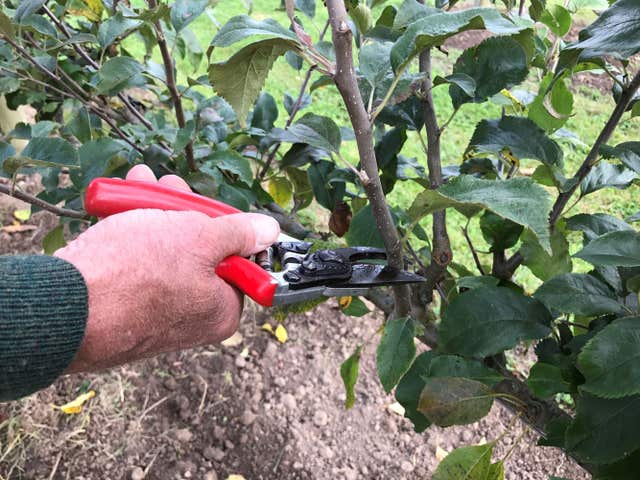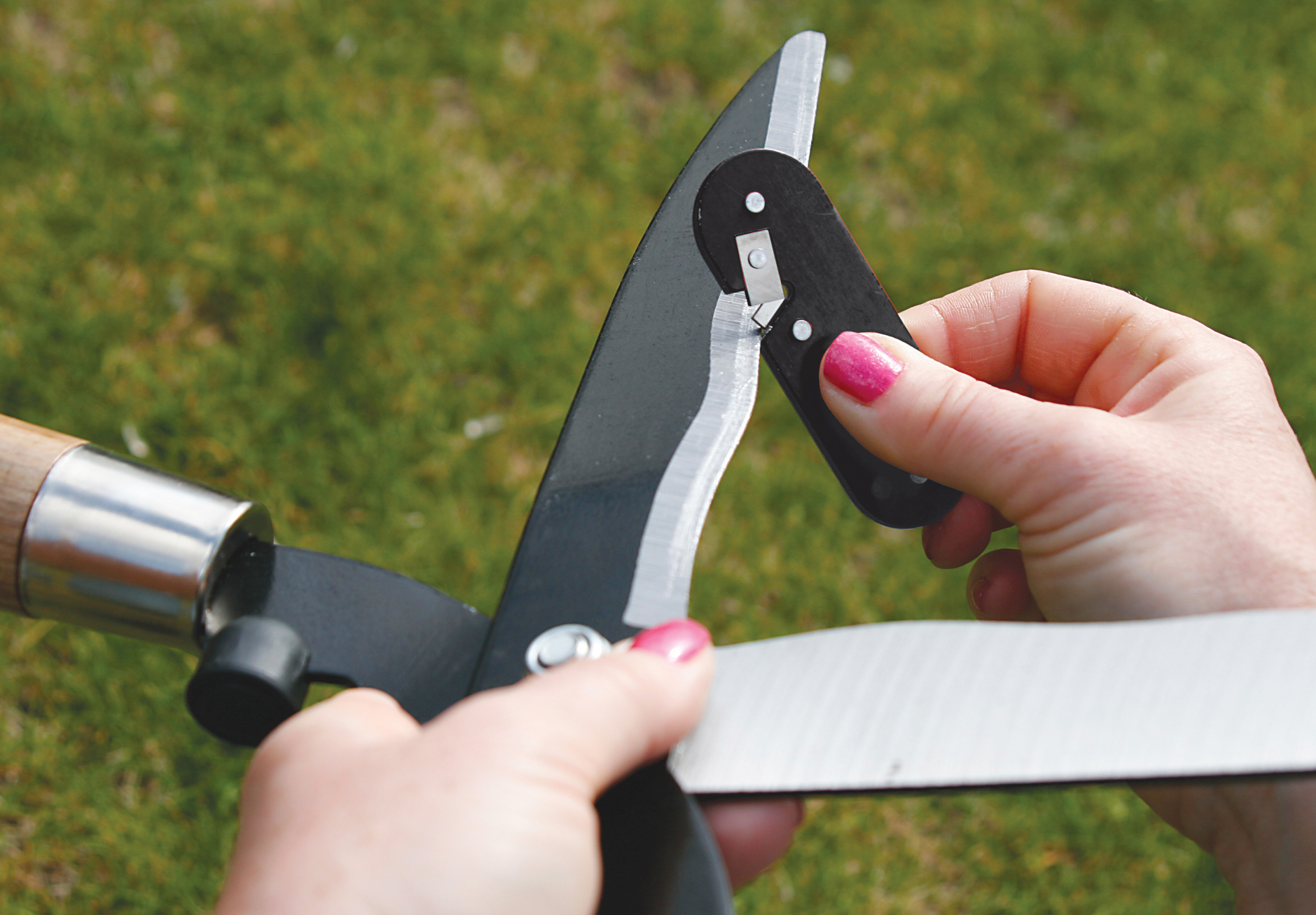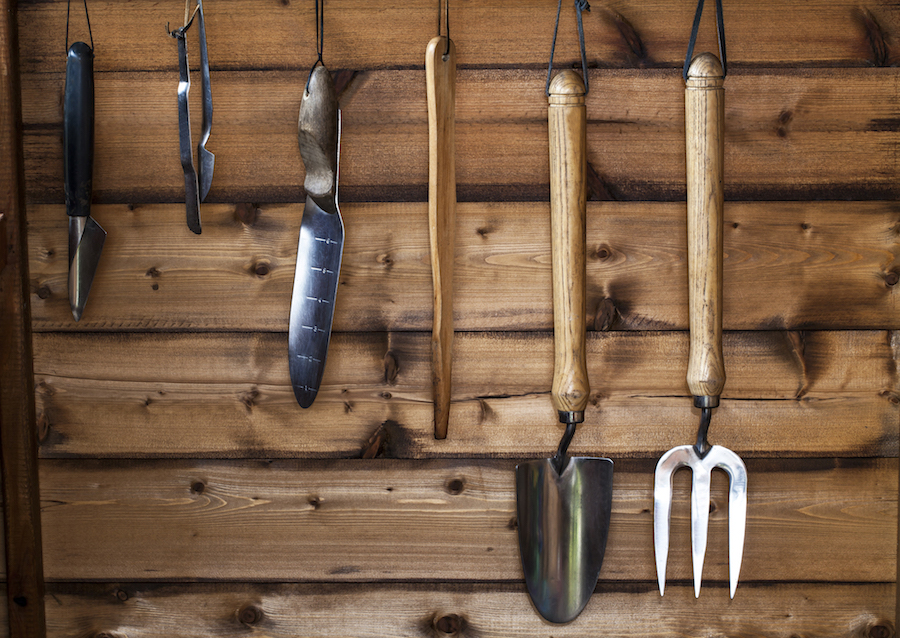5 things to consider before storing your garden tools away for winter
Give your tools some TLC before you put them away for the winter. Our guide shows you how to look after them – and make them last.
As winter sets in, now is the time to think about putting your garden tools into hibernation.
But before stowing them away, you’ll want to give them a thorough clean too and sharpen them up – and maybe consider throwing out the old and investing in some new ones for next season.
Here are 5 things to consider…
1. Don’t leave tools out in the rain
If you want your gardening tools to last, then don’t leave them out in the rain and cold or they will deteriorate – metal will rust and wood will rot.
With any tool, you need to clean the soil off it before storing, oil any moving parts regularly, and sharpen the blades of knives, shears and secateurs, so they make a clean cut every time.

Clean tools thoroughly before storing
Blades can be wiped with an oily rag before prolonged storage, and need to be kept dry to avoid rusting.
2. Make sure you remove all traces of sap
They should be wiped with a damp cloth and washing-up liquid to remove any sap, which can make the cutting surfaces sticky and prevent a good cut next time.
Dried sap and rust can be also be removed by rubbing the blades with wire wool, before oiling them lightly. Secateurs should be left with their blades open to dry thoroughly before putting them away.

Open blades to allow secateurs to dry
When hoes and spades become blunt, either sharpen them by hand or on a grind stone.
3. Think about replacements
If you haven’t looked after your tools and they’ve had it, what replacements should you buy?
Well, if you can afford it, go for top quality, and if not, just go for the best you can afford, as cheap tools only last a few seasons.

Some people might prefer a lightweight spade
If a new spade is needed, go for one that suits your size. A huge, heavy spade may look impressive but won’t be easy to work with if you are small. Go for the one that you feel comfortable with and which suits your height.
A good spade should be made of hardwood which is splinter-free. Check that the shaft, especially where it meets the metal shank, is smooth. The old-fashioned D-shaped handles are often the most comfortable. Check the same things if you are buying a new garden fork.
4. Go for comfort
If you are replacing hand tools, buy stainless steel ones with comfortable handles that don’t create blisters. Spend a little bit more on a pair of good-quality secateurs and they can last you a lifetime if you look after them.

Secateurs should not cut branches thicker than your finger
Remember, in general, you should not use secateurs to cut stems that are any thicker than your finger.
When looking for a new trowel, go for one that is strong, rather than admiring the colour of the handle. Cheaper versions will bend if you are digging into heavy soil, especially where the handle meets the blade. Trowels should be used vertically to take out a hole, rather than horizontally like a flour scoop.
Of course, you will need shears if you have hedges to trim, but make sure they’re not too heavy and that the cutting action is smooth.
If your tools are still usable, there are things you can do to improve their performance. Tighten the blade tension of garden shears to improve their cutting, and remove and sharpen the blades of other pruning tools.

Sharpen cutting tools
As you have done the last cut of the season, it may be time to service your lawnmower. Also, it’s a good time to check electrical equipment, as many plugs, sockets and leads deteriorate with use in the garden.
5. Tidy the shed

Tidy up your tools with a tool rack (Burgon & Ball)
Once you’ve had a good clear-out of the shed, you may find space to put up racks and shelves so you can neatly store your newly-cleaned tools, rather than just leaving them on the floor.
That way, there is less chance of accidents through treading on rakes, hoes and other sharp instruments. Plus, invest in a series of galvanised or plastic-coated wire tool racks for the wall and you’ll never have to hunt for your fork or trowel again.
Then, when the busy period of spring arrives, you’ll have all the tools for the job – and know they’re all in working order.
The Press Association
Latest posts by The Press Association (see all)
- 3 easy Mary Berry recipes to make this season - November 22, 2024
- In Pictures: Party stalwart kept New Labour in touch with traditional supporters - November 21, 2024
- 6 easy indoor exercises to try this winter – and why they are good for you - November 19, 2024
- Martin Clunes: I can’t afford to retire – I’ve got too many horses - November 19, 2024
- How to avoid plant losses, flowering disappointments and container catastrophes - November 17, 2024





















